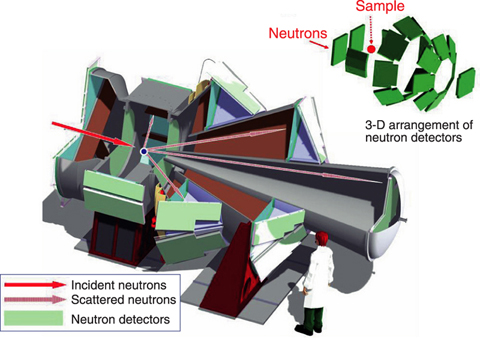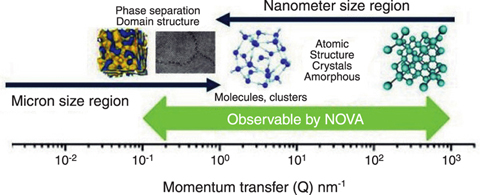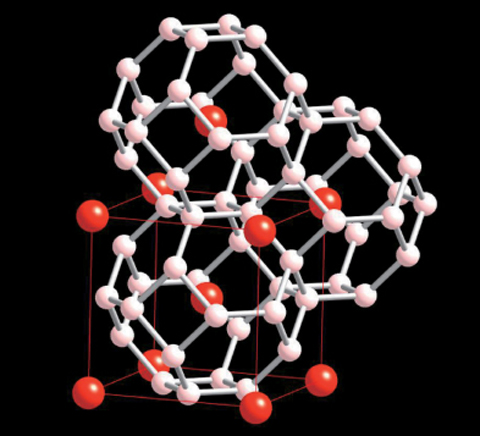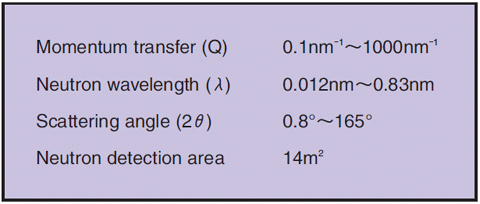
Fig.14-12 Bird's eye view of the high-intensity pulsed neutron total diffractometer (NOVA)

Fig.14-13 Momentum transfer (Q) range observed by NOVA

Fig.14-14 Positions of vacancies (white balls) where hydrogen can enter in a body-centered cubic lattice (red balls)
Table 14-1 Basic specifications of NOVA

It is difficult to investigate the structure of the hydrogen storage materials by X-ray diffraction and other methods because hydrogen is the lightest element and because of the disordered structure of hydrogen storage materials. To analyze such a disordered structure with high accuracy, a high-intensity pulsed neutron total diffractometer (called "NOVA", Fig.14-12) was constructed at J-PARC. Hydrogen is expected to be a next-generation source of clean energy. A great increase in the capacity of the hydrogen storage materials, in which hydrogen is accumulated, is essential to achieve a hydrogen society. To enlarge this capacity, it is necessary to understand the positions of hydrogen atoms and the structural paths of hydrogen entry/discharge in the storage materials accurately within a large-scale observation range from nanometer to submicron (Fig.14-13). NOVA has a large-area (14m2) neutron detection system (Fig.14-12, inset) at the world's highest intensity neutron source in the J-PARC Material and Life Science Facility (MLF), which makes difficult observations possible. The world's highest specifications of NOVA are listed in Table 14-1.
Typical hydrogen storage materials include hydrogen storage metals such as vanadium and niobium, which have body center cubic (bcc) lattices making free internal vacancies as shown in Fig.14-14. Not all these vacancies, however, can be occupied by hydrogen atoms at one time. There must be a mechanism (structural reason) which suppresses the proportion of vacancies occupied by hydrogen atoms in the materials. We can observe the hydrogen-hydrogen correlations (not only lattice of metal atoms) directly using NOVA. The structural factors that control the amount of hydrogen that can be absorbed are expected to be revealed by this direct observation of the structural order/disorder that hydrogen atoms form.
The construction of NOVA has been supported by new technologies developed at J-PARC for data integration, electronics, detectors, choppers and radiation shielding.
The present study was conducted under the "Advanced Fundamental Research Project on Hydrogen Storage Materials (FY2007-2011)" commissioned by the New Energy and Industrial Technology Development Organization (NEDO).